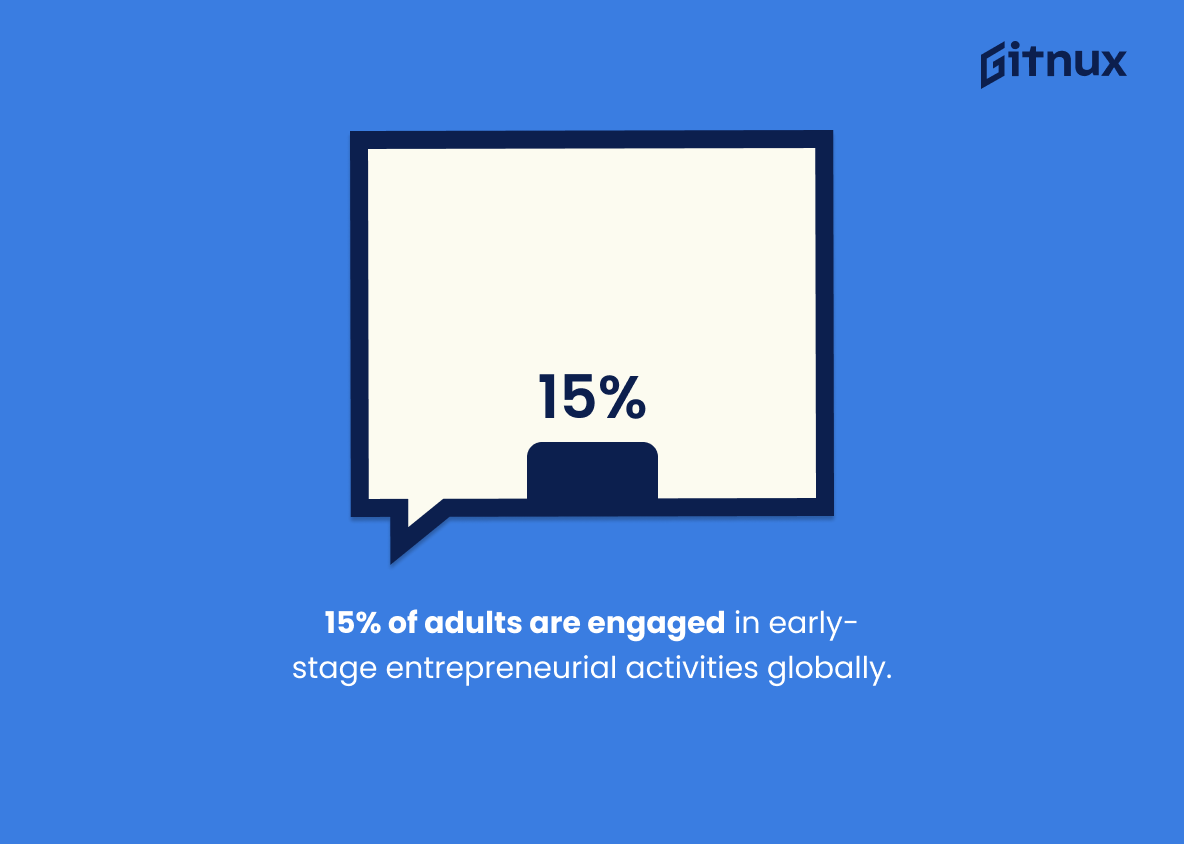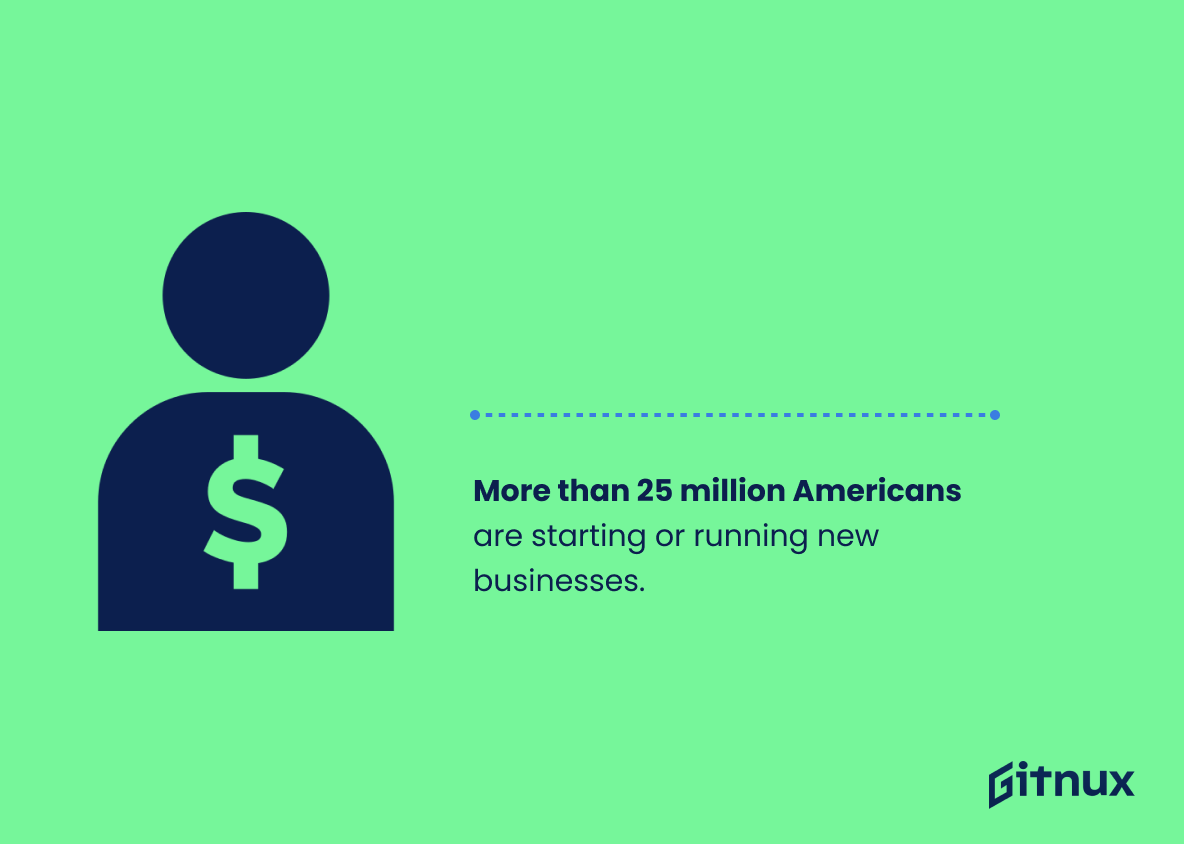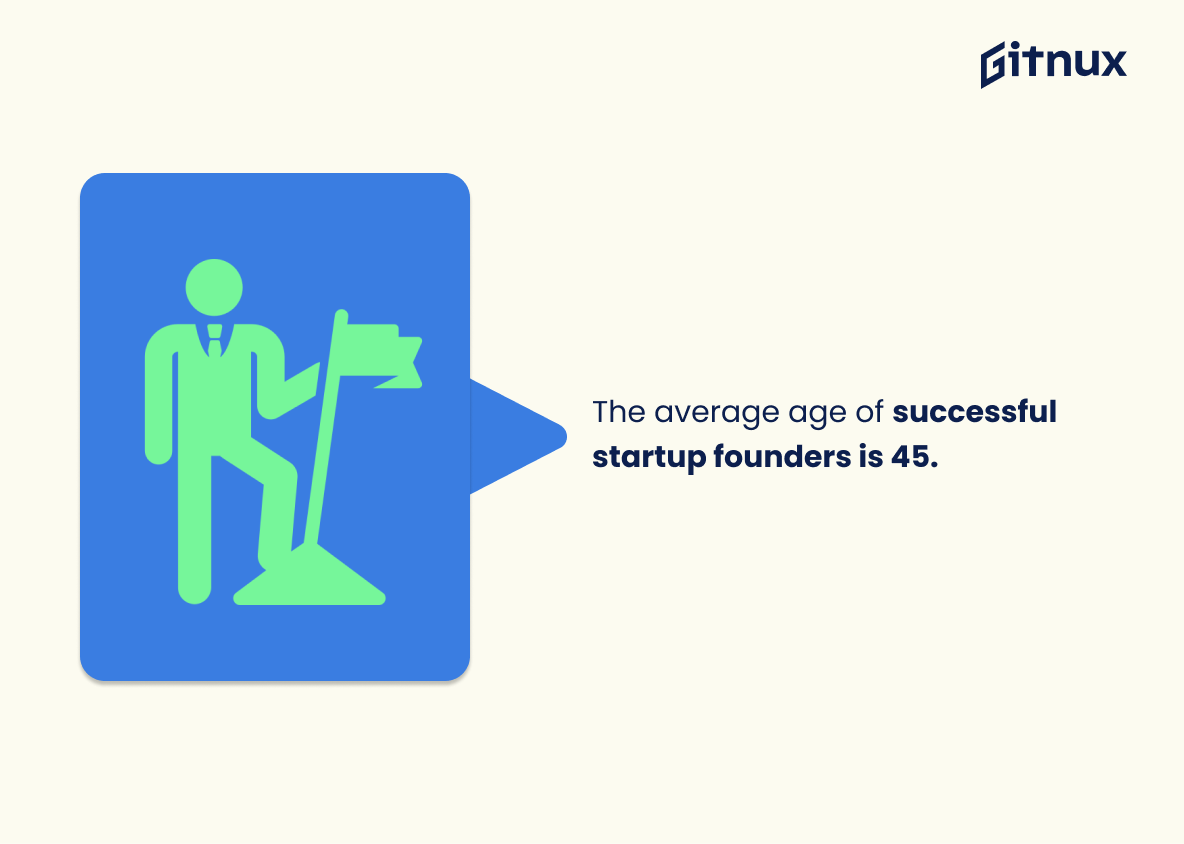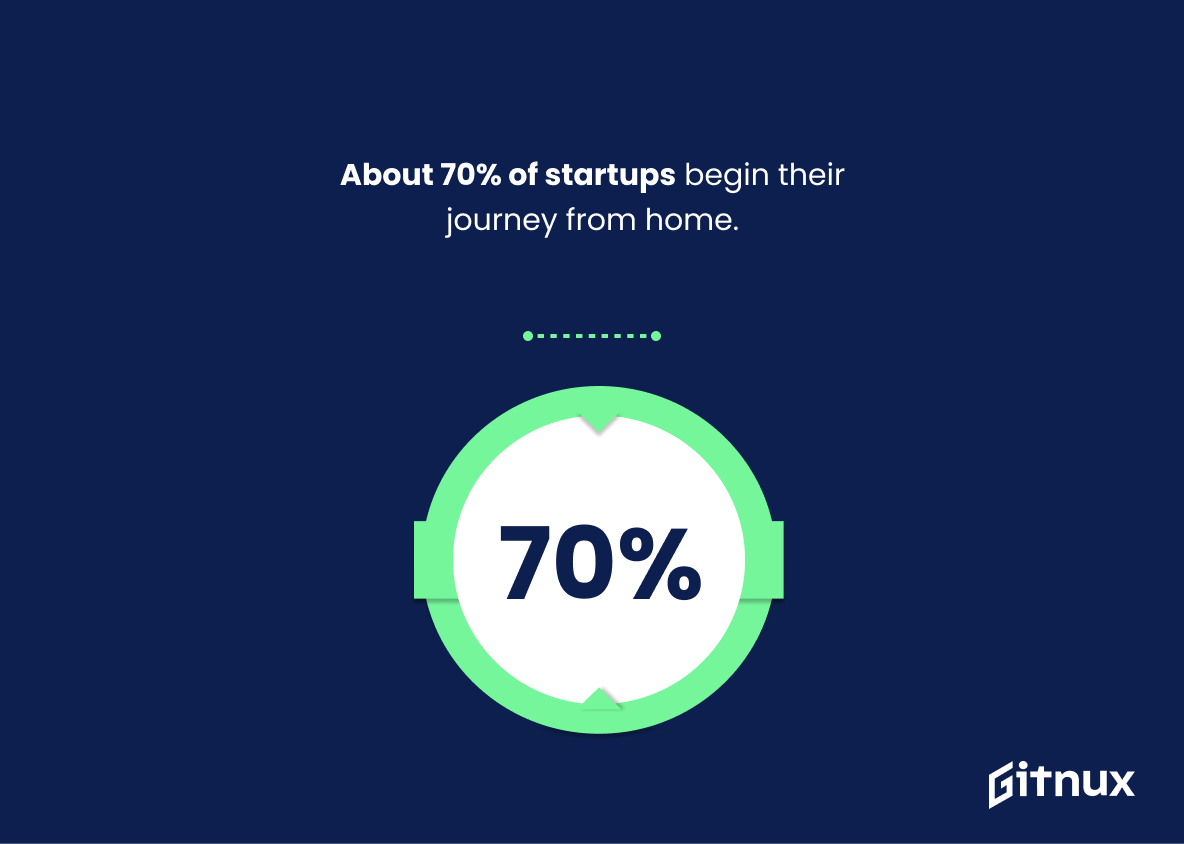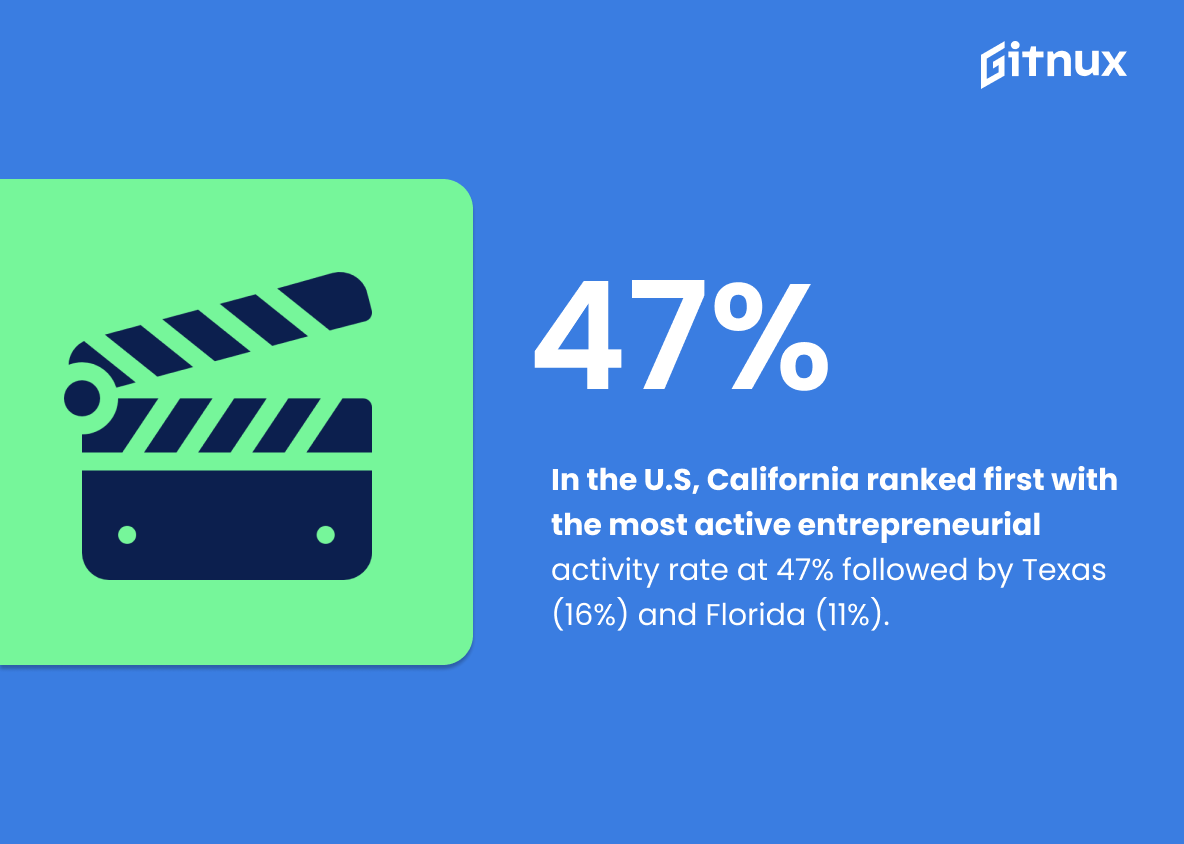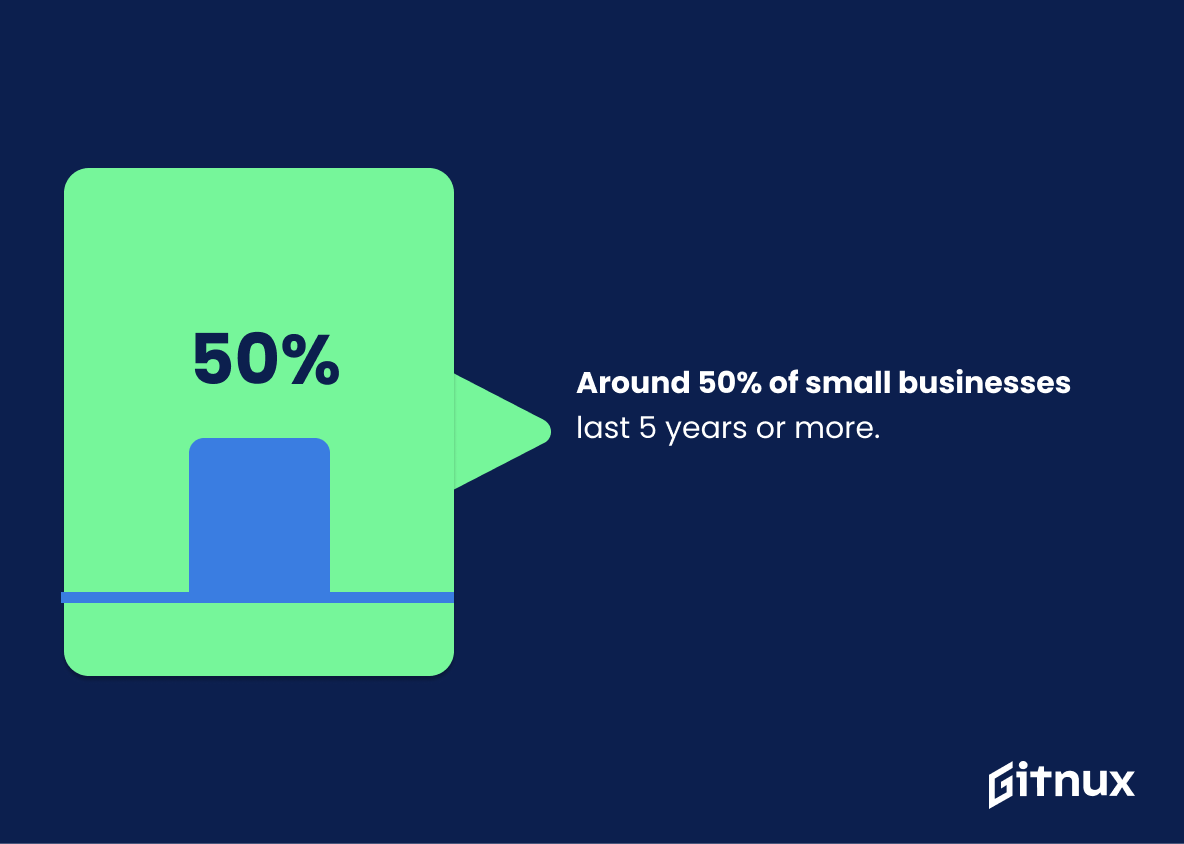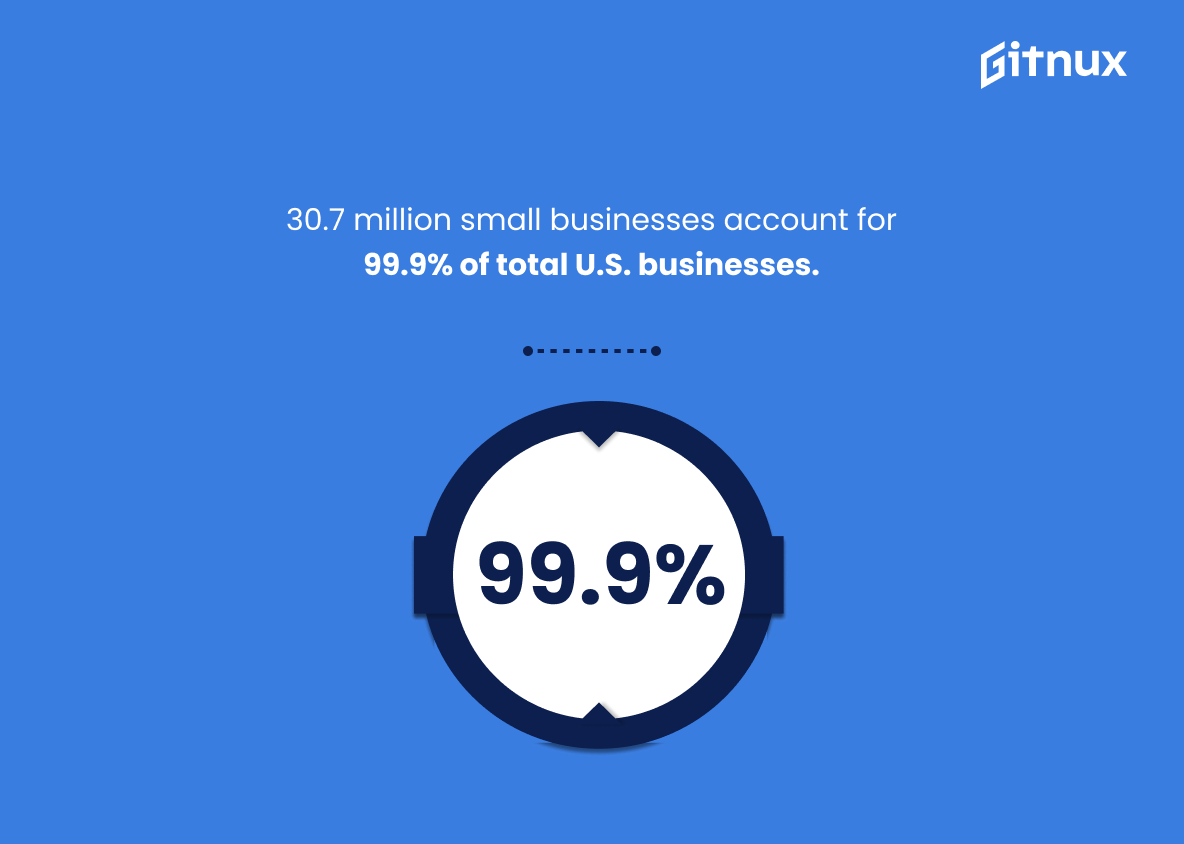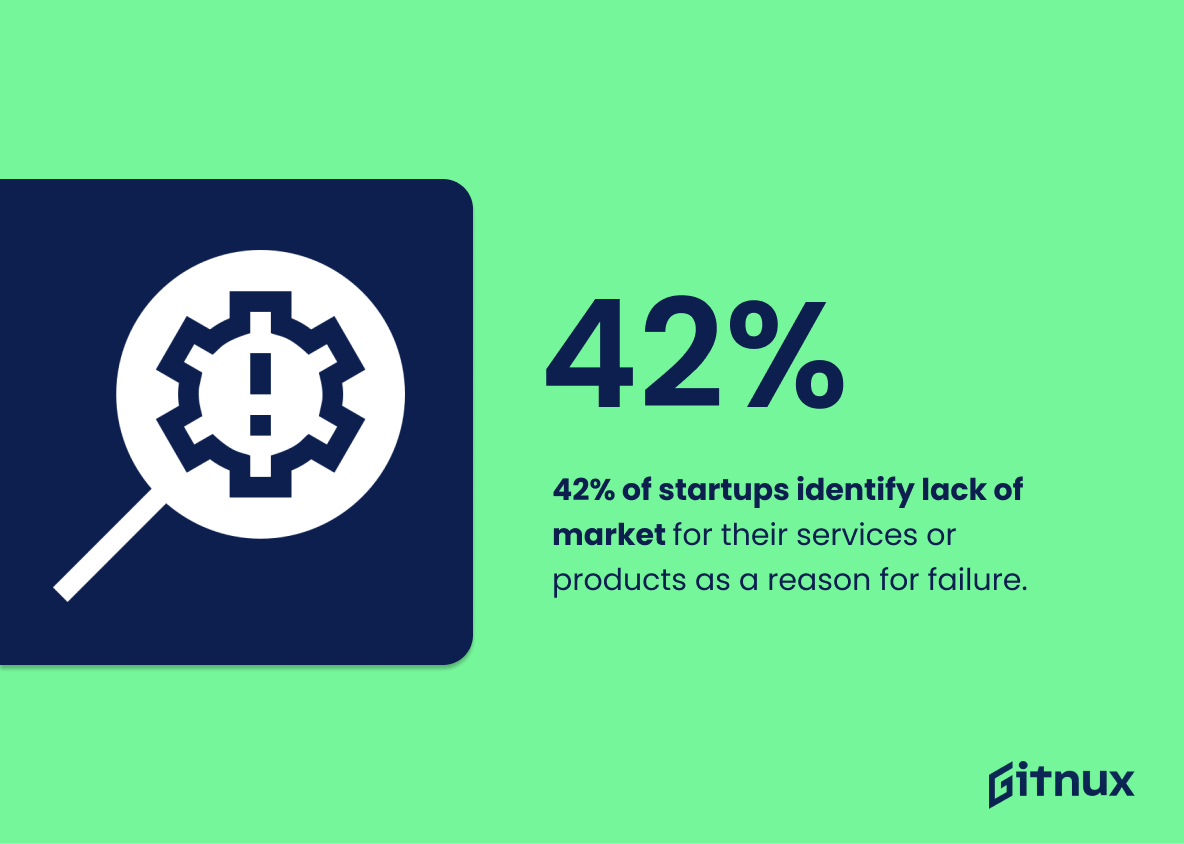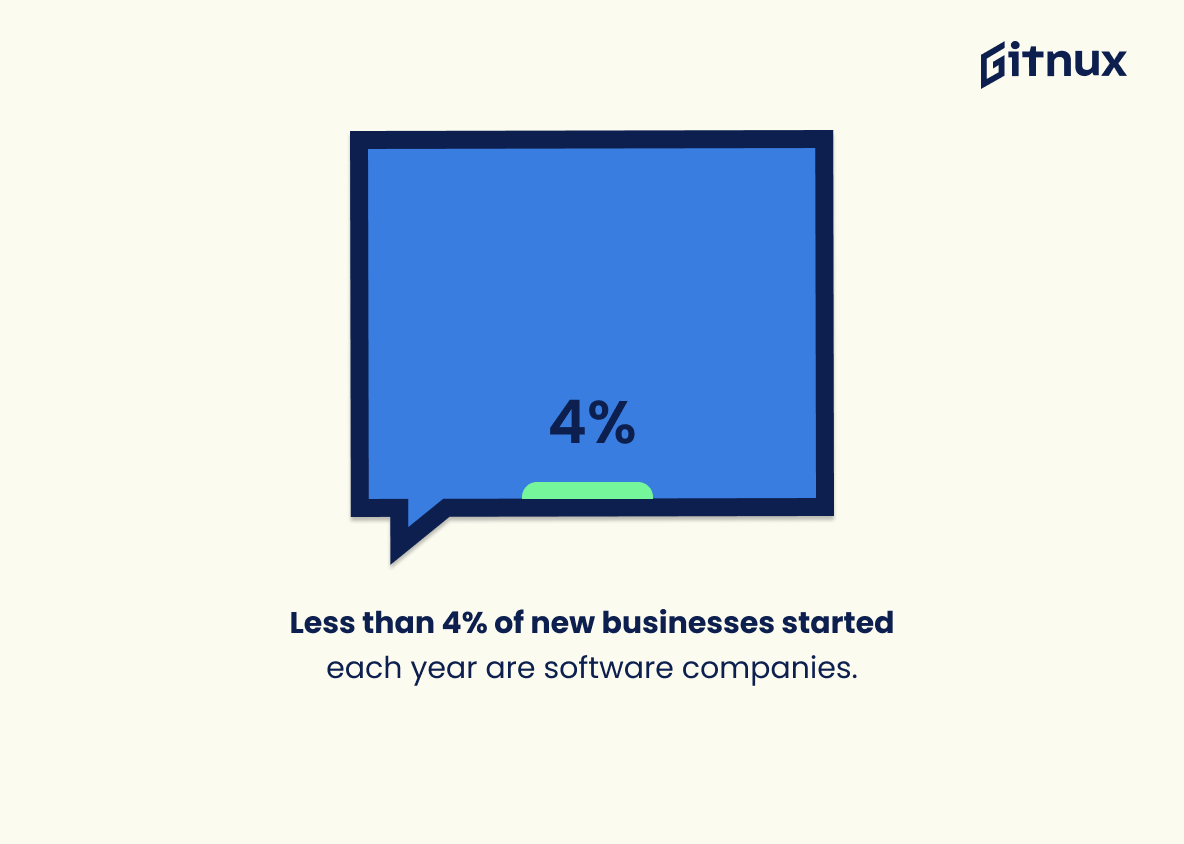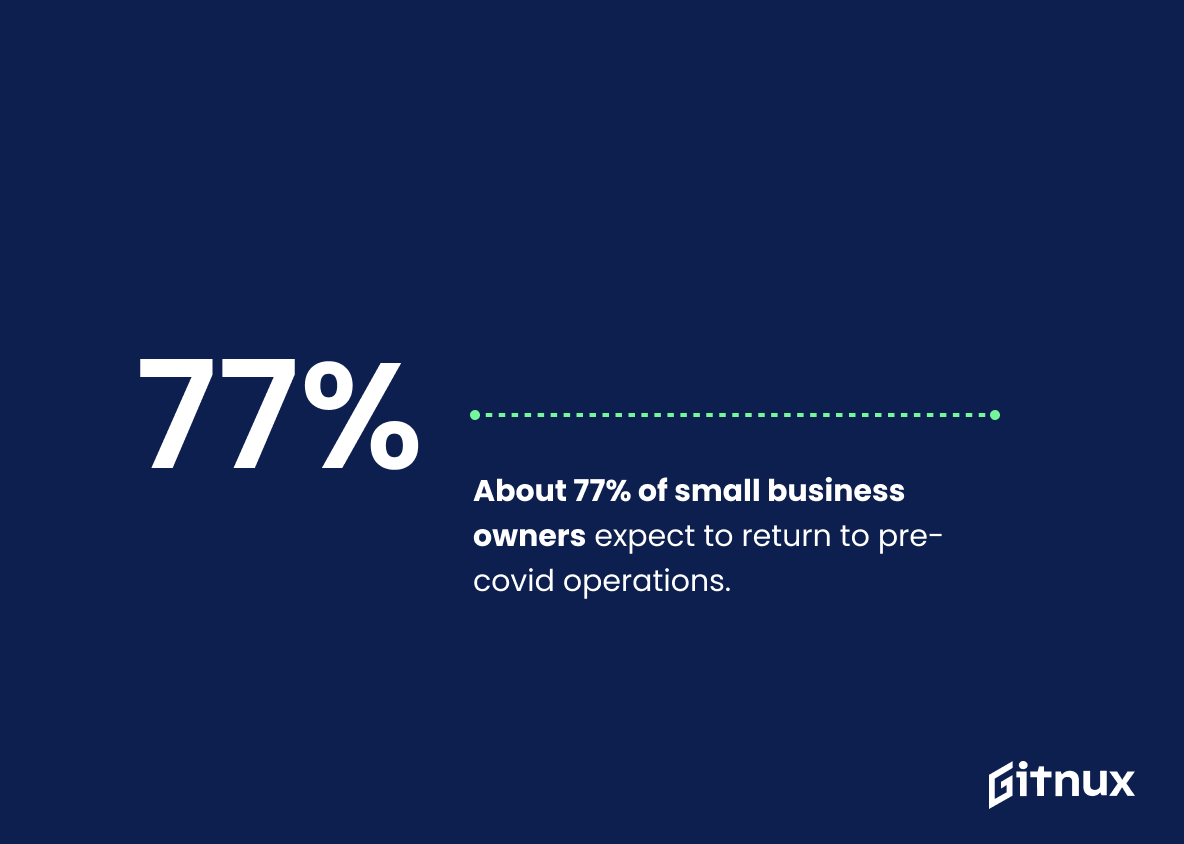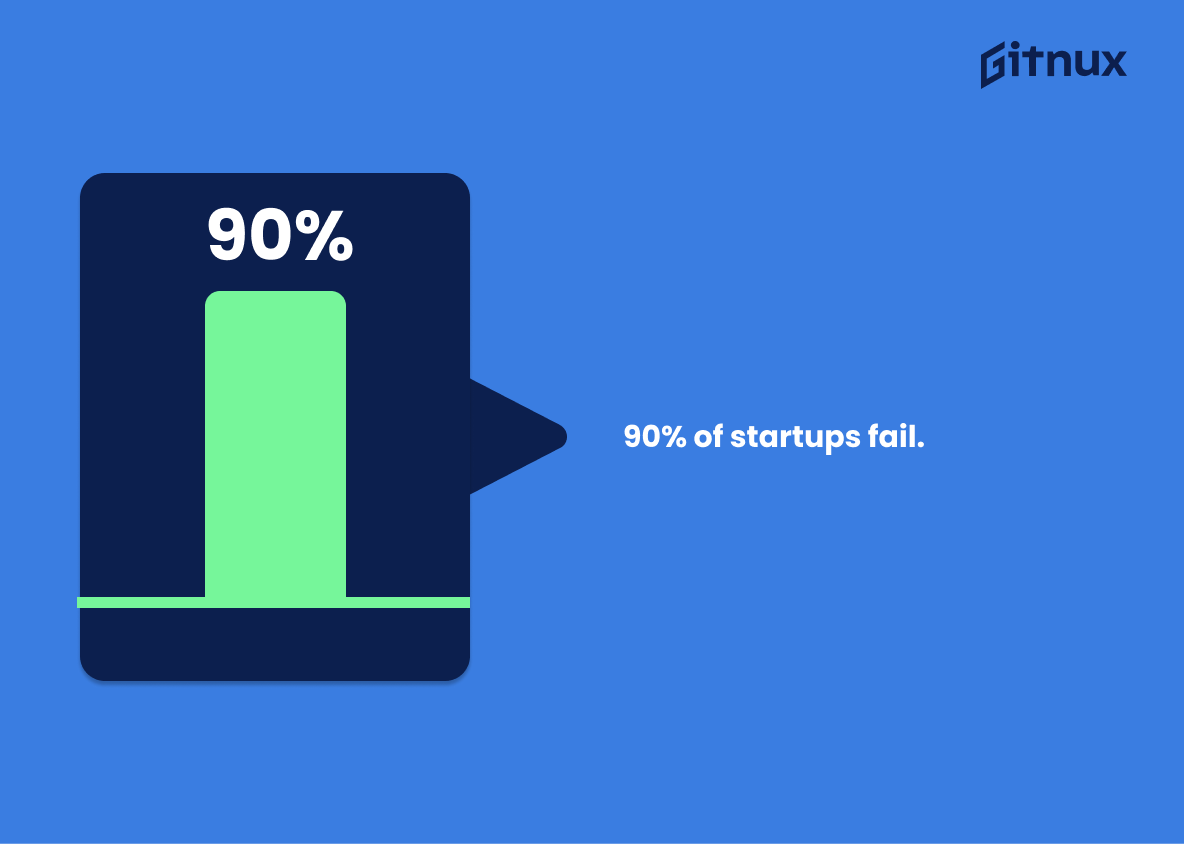In the immersive world of business and innovation, entrepreneurship forms the backbone of economic growth, personal freedom, and career flexibility. With a rapidly changing industrial landscape, understanding entrepreneurship statistics can provide a unique perspective on market dynamics, global trends, and economic indicators. This blog post delves into the intriguing world of entrepreneurship, presenting the most compelling insights gathered from the latest statistics.
These data-driven insights will offer a comprehensive analysis of entrepreneurial success factors, challenges, and the transformative impact of startups, serving as an essential guide for aspiring entrepreneurs, business enthusiasts, and market analysts. So, whether you’re embarking on a startup journey or exploring the intricacies of the global economy, get ready to journey through the fascinating world of entrepreneurship statistics.
The Latest Entrepreneurship Statistics Unveiled
55% of startups have already adopted a digital business strategy compared to 38% of traditional enterprises.
In the thriving ecosystem of entrepreneurship, this intriguing statistic serves as a strong testament to the digital-first approach adopted by a majority of startups. Evidently, a sweeping 55% have wielded the power of digital business strategies, contrasting sharply with the mere 38% rooted in traditional enterprises. This digital manoeuvre among startups offers a telling commentary on their innate agility, adaptiveness, and willingness to harness cutting-edge technologies.
Not to forget, it showcases an inclination towards innovation and risk-taking, core elements of entrepreneurship, lending further depth to this statistics-ridden entrepreneurship blog post. This ‘digital divide’ between startups and traditional businesses also throws light on the shifting paradigm in business strategies, accentuating the survival of the fittest in the fast-paced entrepreneurial world.
15% of adults are engaged in early-stage entrepreneurial activities globally.
Painting a picture of the global entrepreneurial landscape, this particular statistic ushers in an inspiring revelation. The assertion that 15% of adults are engaged in early-stage entrepreneurial activities globally starkly represents the growing prevalence of business starters and go-getters worldwide. Now more than ever, folks are stepping away from traditional employment paths to carve out space for their innovative ideas and ventures.
This figure, so steeped in audacity and optimism, not only exemplifies the sheer magnitude of individuals striving to launch their own businesses but also forecasts a dynamic and flourishing future for worldwide entrepreneurship. Thus, within an article focusing on entrepreneurship statistics, this nugget of data serves as a beacon – highlighting, amid the sea of facts, the rise of entrepreneurship as a widespread and feasible career path.
More than 25 million Americans are starting or running new businesses.
This impressive figure underscores the vibrancy and dynamism of the U.S. entrepreneurial landscape, painting a vivid picture of a country brimming with innovators and go-getters who aren’t afraid to embrace the risks and rewards of starting a new venture. It creates a compelling narrative around the scale and scope of entrepreneurship, serving as an inspiration for current and aspiring entrepreneurs, making the blog post more persuasive and engaging.
It also sheds light on the potential impact of these businesses on the economy, job creation, and innovation. Such a staggering statistic propels the understanding and appreciation of entrepreneurship’s pivotal role in driving America’s economic engine.
The average age of successful startup founders is 45.
Unveiling the veil of a popular misconception, the statistic reminding us about the average age of successful startup founders being 45 carries a powerful message in the tide of entrepreneurship statistics. It’s a warm reassurance to individuals who, bound by the notion of entrepreneurship being a ‘young person’s game’, might hesitate on embarking their business journey.
It reaffirms the importance of experience, accumulated knowledge and mature judgment in guiding a startup towards success. An entrepreneur venturing in their mid-life brings to the table not just a business idea, but years of skills, networking and understanding of the industry’s intricacies. Hence, this statistic is a beacon of hope for those mid-career aspirants, inspiring them to shed their inhibitions and join the bigger game of entrepreneurship.
About 70% of startups begin their journey from home.
Diving headfirst into the vigorous sea of entrepreneurship, let’s anchor at an eye-opening piece of data – approximately 70% of startups cast off their journey from the comfort of their home. Such a statistic restyles the canvas of entrepreneurship, debunking the myth that large offices or tech parks are the birthplace of all bright ideas.
The notable 70% takes us on a detour from the expected, illustrating that home can be more than just a living space; it can morph into an incubator for innovative ventures. Each room has the potential to be a brainstorming hub, each corner a source of entrepreneurial inspiration. Such a trend bares the reality of start-up investments, exposing that a monumental capital isn’t the immediate necessity, and that resourcefulness can trump vast resources.
In an age where the ‘hustle from home’ culture is escalading, this number emboldens aspiring founders, engraving that success isn’t confined to glass towers; it can germinate from your garage too. Entrepreneurship, hence, is not about the place, but passion, tenacity, and vision, and this statistic, my friends, serves as the riveting testament.
In the U.S, California ranked first with the most active entrepreneurial activity rate at 47% followed by Texas (16%) and Florida (11%).
From a sweeping vista of entrepreneurial landscapes, one state stands like a leviathan of innovation: California, wearing the crown with a remarkable 47% active entrepreneurial activity rate. This is a tantalizing tidbit of information for readers of a blog post on Entrepreneurship Statistics, not only because it identifies the geographical heartland of the entrepreneurial spirit, but also gives insight into a region enabling the majority of new businesses to flourish.
However, to say the entrepreneurial story is merely a Californian tale would be unfair as Texas and Florida are also dynamic players in this arena with rates of 16% and 11% respectively. Consequently, an understanding of these figures helps construct a comprehensive narrative on the nature, geographical distribution, and vitality of entrepreneurship across states. The readers might further infer the potential systemic factors or regional attributes propelling these stats, fostering an environment conducive for entrepreneurs to ideate, innovate, and implement.
This valuable statistics, therefore, paints a vivid picture of state-wise entrepreneurial activity, offering discerning readers a head start in making well-informed decisions regarding where to kick-start their business ventures.
Women make up 40% of new entrepreneurs in the United States.
The impressive depiction of women constituting 40% of new entrepreneurs in the United States delivers an empowering narrative of gender equity within the entrepreneurial landscape. It redresses the formerly held notion of entrepreneurship being largely a male-dominated sphere. This number evokes a sense of optimism for aspiring female entrepreneurs, denoting that the gender divide in the entrepreneurial world is slowly but surely blurring.
Moreover, it lays the foundation for potential market opportunities within majority-female industries. Furthermore, it signifies the growing role and potential power of women not just as consumers but as creation and innovation drivers within the business world. Such a transformation in the entrepreneurial ecosystem underscores the importance and the role of woman power in economic development and societal progress.
About 84% of entrepreneurs started their business; they did not inherit it.
Piecing together the fabric of entrepreneurial tales, this particular statistic sheds a dazzling light on the audacity and vision of new-age business mavens. A staggering 84% of entrepreneurs hustled their way into creating their empires, as opposed to inheriting them, vividly painting the canvas of opportunity, passion, and raw determination.
This intricate weave of data is profound as it unstitches the archaic myth that one must come from wealth to gain success. Rather, it echoes the intriguing narrative – entrepreneurship is not exclusive to silver spoon heirs, but welcoming to hard-hitting innovators and dream chasers, adding a unique edge and sway to our blog post on Entrepreneurship Statistics.
Around 50% of small businesses last 5 years or more.
In the realm of entrepreneurship, the dynamism of survival statistics paints a compelling picture. The nugget of information that around 50% of small businesses endure the 5-year mark ties a tense knot in the narrative of entrepreneurship. It threads a stark reality through the dreams of budding entrepreneurs, disrupting the idyllic notion of start-ups as sure shot roads to success.
Thus, this statistic serves as a mental mooring, a humbling reminder of the tumultuous journey of entrepreneurship. Furthermore, it spurs potential entrepreneurs to dive in with a thorough understanding of industry realities, armoured for survival and success.
30.7 million small businesses account for 99.9% of total U.S. businesses.
Painting an entrepreneurial landscape, the phenomenal statistic that ‘30.7 million small businesses account for 99.9% of total U.S. businesses’ commands attention. It is the beating heart of American enterprise pulsating powerfully at its core. Manifesting the lion’s share of entrepreneurial activity, these small businesses cultivate innovation, stimulate economic growth, provide employment, and contribute significantly to the GDP.
Whether you are a budding entrepreneur, an investor, a policymaker, or a researcher, this statistic offers a lens to map trends, calculate risks, snapshot the vitality of certain sectors, anticipate future business models and evaluate the impact of fiscal policies. So, the sheer muscle of this statistic serves as a lighthouse, guiding the entrepreneurial ship and shaping strategies for a thriving business environment.
42% of startups identify lack of market for their services or products as a reason for failure.
Unraveling the tapestry of entrepreneurship, we encounter a defining thread with a surprising statistic – 42% of startups point towards an absence of market for their products or services as a chief culprit for their downfall. This insight isn’t just numerical trivia, but a significant illumination on the path of entrepreneurial ventures.
Imagine the journey of entrepreneurs as embarking upon uncharted waters, where knowing undercurrents and potential storms can make all the difference. The aforementioned fact can be that guiding lighthouse for budding entrepreneurs, warning them about the critical importance of accurate market analysis and target audience identification.
In essence, it lays bare an often-overlooked truth – no matter how innovative the product or flawless the service, they meet an untimely end when there’s no market need. This statistic then serves as a stark, invaluable reminder to entrepreneurs to not just conceive a fantastic idea, but equally focus on its market feasibility.
Therefore, in any blog post about Entrepreneurship Statistics, skipping this statistic would be akin to painting an incomplete picture – one that doesn’t adequately caution aspiring entrepreneurs about this common pitfall that lays on their path.
Less than 4% of new businesses started each year are software companies.
Peeling back the layers of the entrepreneurial landscape, the mere 4% figure of new software companies established each year provides intriguing insight. This data representation underscores the uniqueness and challenge within the software sector when contrasted to the wider arena of new business startups.
Reflecting upon the competitive dynamics of entrepreneurship, it illuminates that an entrepreneurial leap into the tech realm isn’t as common as you may think, propelling aspiring software moguls to strategize intelligently. Moreover, this uncovers an opportunity for growth and expansion in the software industry, beckoning forward-thinking entrepreneurs to concur this sparse domain, potentially shaping a digitally dominated future.
About 77% of small business owners expect to return to pre-covid operations.
Delving into the fertile realm of entrepreneurship statistics, one cannot disregard the compelling illustration that shows approximately 77% of small business owners envisioning a return to pre-covid operations. This projection adds substantial gravity to the entrepreneurial narrative as it echoes resilience and adaptability intrinsic to modern business owners.
Lending a sense of fortitude, this statistic encapsulates the spirit of entrepreneurs who, despite the pandemic’s bruising impact, remain steadfast in their pursuit of normalcy. It is significant as it embodies the potential rebound of micro-economies and the creation of a springboard for new opportunities and growth in a post-covid world.
Furthermore, this statistic breathes life into the entrepreneurial landscape, shaping each blog reader’s understanding of how small businesses, the backbone of many economies, envisage rising above adversities. It accentuates entrepreneurial optimism, thereby coloring the overall blog post with a profound sense of hope amid the economic aftermath of a global pandemic.
Therefore, it resonates not just as a number, but a testament to the undying entrepreneurial spirit, reaffirming their tenacity in the face of tribulations – a cornerstone theme in our blog post about Entrepreneurship Statistics.
90% of startups fail.
Grasping the daunting figure that 90% of startups meet their demise presents a rather grim reality for budding entrepreneurs delving into the fiercely competitive world of business. When discussing Entrepreneurship Statistics, this tough statistic underscores the colossal trials facing startups and serves as a wakeup call or a reality check for new ventures.
In the insightful labyrinth of entrepreneurship, this startling number acts as a beacon, illuminating the harsh certainty but also empowering entrepreneurs to arm themselves with effective strategies, robust planning, a failsafe business model, and resilience. This statistic kindles the curiosity to sift through the remaining 10%, the survivors, to decipher the secret code to their success. In essence, while it shadows the hurdles, it also fires up the spirit of competitiveness and the desire to strive for the exceptional minority.
Pondering over this figure, one may realise how forging a startup is not just about revolutionary ideas, but a blend of administration, forecasting, decision making, and risk-bearing ability, and this statistic compels aspiring entrepreneurs to deliberate on these factors before embarking on their startup journey.
Conclusion
Entrepreneurship realistically isn’t for everyone, but for those with the drive, vision, and courage to make their business ideas a reality, the potential rewards are immense. The statistics illustrate a vibrant landscape teeming with innovation, risk, and reward. They underscore the fundamental role of entrepreneurship in job creation, economic growth and technological innovation.
While the road to entrepreneurial success is fraught with challenges, armed with these statistics and insights, you can approach your entrepreneurial journey more strategically, informed, and ready to seize opportunities. Remember, every data point represents a human being who dared to dream and turn their entrepreneurial dreams into reality. You could potentially be part of the next wave of these statistics, defining the future of entrepreneurship.
References
0. – https://www.www.score.org
1. – https://www.www.sba.gov
2. – https://www.www.cnbc.com
3. – https://www.www.kauffman.org
4. – https://www.www.gemconsortium.org
5. – https://www.www.idc.com
6. – https://www.a16z.com
7. – https://www.g.co
8. – https://www.hbr.org
9. – https://www.www.cbinsights.com
10. – https://www.www.failory.com
11. – https://www.www.zenbusiness.com
12. – https://www.sbecouncil.org

